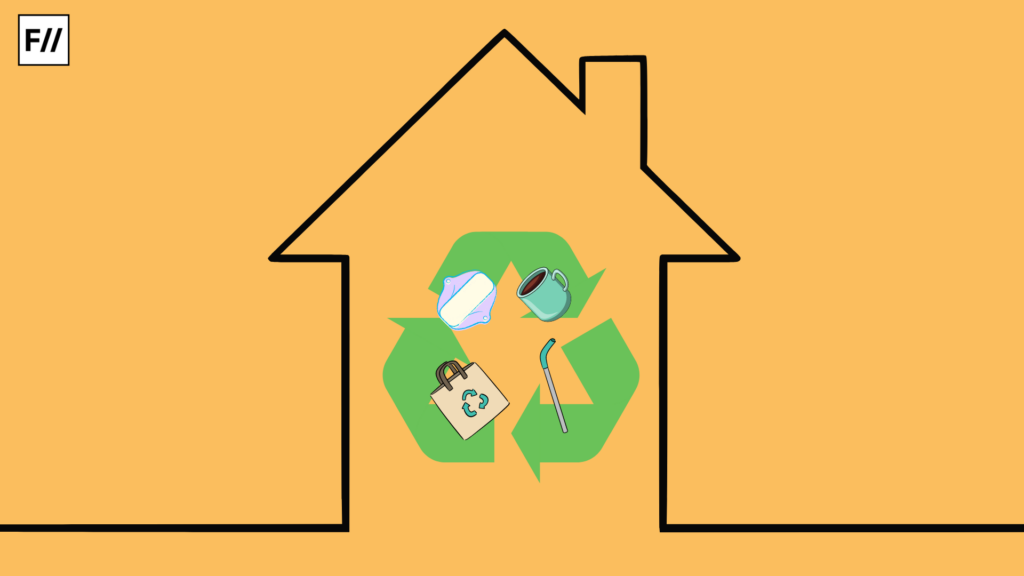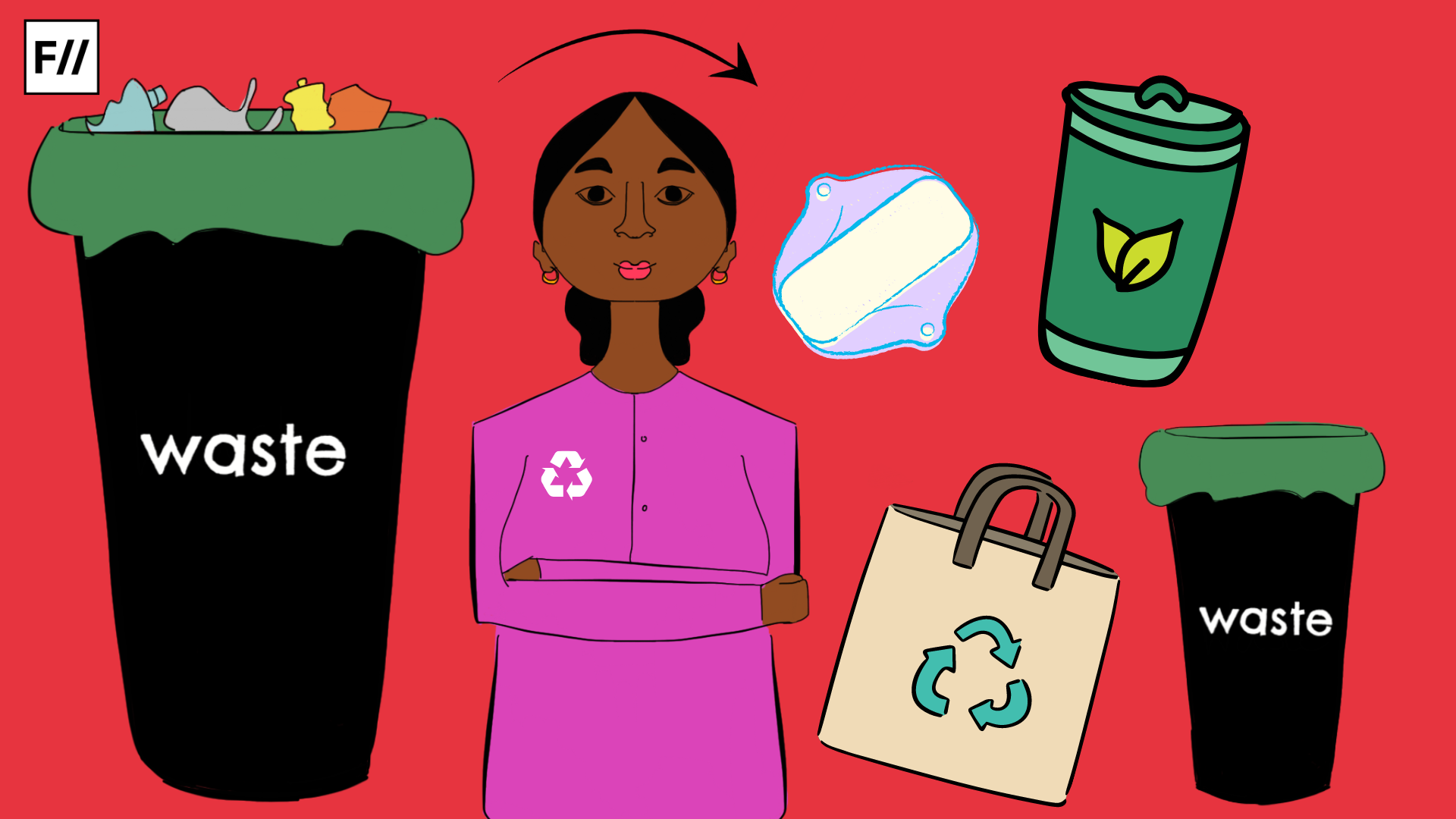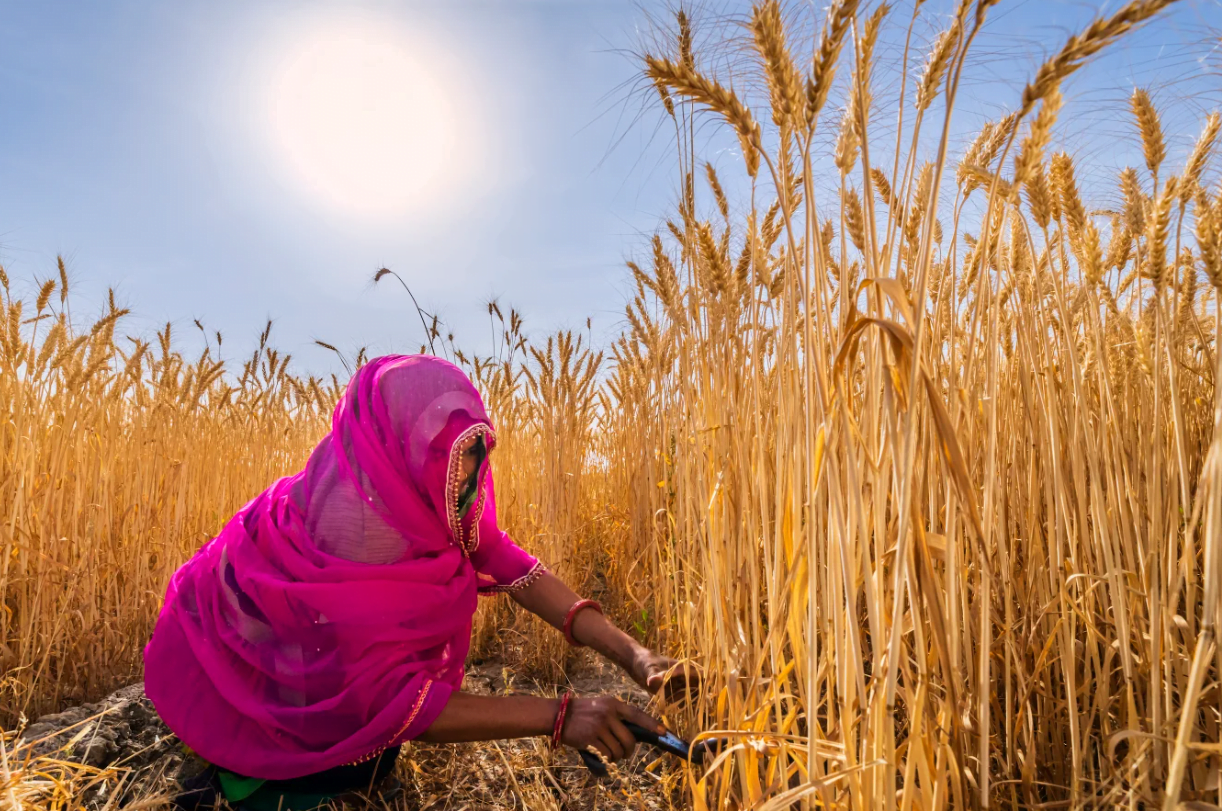Editor’s Note: FII’s #MoodOfTheMonth for July 2021 is Sustainability. We invite submissions on the diverse aspects of sustainability throughout the month. If you’d like to contribute, kindly email your articles to sukanya@feminisminindia.com
Sustainable living entails different things to different people and so does the motivation for doing so. For me, it started when I had my son. I realised how much we damage the planet, and that my son would grow up in a much worse condition than today.
Through my research on this topic, I realised that as an individual, one can make significant impact by reducing waste and opting for sustainable alternatives. My husband and I decided to do as much as we could, to make changes to our lifestyle. Now, after a year of starting with small changes, we no longer have a dustbin in our house, and we do not trash anything.
Though individuals cannot remedy the systemic mishandling of the environment and its consequential injustice, small, consistent individual efforts can help minimise the contribution to this problem
Creating waste is not just an environmental issue, but also a social and economic justice issue, especially in India where waste is collected and segregated by hand by sanitation workers. The conditions under which they work is inexcusable. With large landfills outside big cities, waste disposal also adversely affects the health of those who live in the vicinity, especially the lower income groups who have no other options to find cleaner dwelling.

Though individuals cannot remedy the systemic mishandling of the environment and its consequential injustice, small, consistent individual efforts can help minimise the contribution to this problem. We have reduced overall consumption by using as much as what we already have and we buy only what we really need. Over consumption is one of the biggest reasons for the waste crisis.
We also try to reduce waste by avoiding the usage of disposable products (single use plastic, cotton balls, diapers, sanitary pads, kitchen wipes, paper napkins etc). Instead, we use reusable alternatives. We try to buy sustainable products from small local brands, as much as possible.
Here is how we put into practice these steps:
1. Carry our own cloth bags whenever we go shopping (and refuse paper bags). Carry our own water bottle and a cloth napkin. If we ever want take-away coffee, we carry our own cups. While traveling, we even carry a set of cutlery and reusable straws (especially with kids).
2. Reduce random shopping. I’m guilty of doing this before I became aware of the waste it generates. I would scan shopping apps if I was getting bored and would end up buying things that I did not really need, especially clothes and shoes. Now, I have hardly purchased anything in almost 2 years, and I think I have enough to last a lifetime.
Also read: 7 Tips On How To Build A Sustainable Wardrobe
3. Sustainable grocery shopping. We have switched to buying locally grown produce. We also buy groceries without packaging as much as possible (local grocery stores sell most things in loose quantities, even big supermarkets offer loose groceries). We carry our own containers and fill up as much as possible. We have also considerably reduced consumption of processed and packaged food. By doing this, we automatically reduce waste and eat healthy. We realised that grocery packaging was one of the largest contributors to our household plastic waste, and we have reduced that considerably.
4. Another step for us was to swap regular use commercial products with sustainable ones. We have switched to DIY (Do It Yourself) and sustainable brands for home cleaners. These aren’t just good for the environment, but also for us. Commercial cleaners are full of toxic chemicals.
5. When it came to toiletries, we swapped shampoos and shower gels with soap and shampoo bars, switched to bamboo toothbrushes, DIY toothpaste and cut down on unnecessary skin care products. This has been one of the easiest swaps for us.
Here, I would like to share a word of caution from experience. If you are looking to go for sustainable alternatives, please do not start throwing your things out! Use what you have, till the last drop and then swap. This also goes for things like plastic containers (especially kitchen storage). Use them till you can and once it’s time to buy new ones, opt for glass or steel containers.
6. Reuse and repurpose existing things (just like our grandparents did!). For instance, we use old worn out T-shirts/clothes to clean floors and make kitchen wipes out of them. This saves money and reduces waste. We use old socks as utensil scrubbers instead of using plastic ones.
7. For our son, instead of buying new things, we rely a lot on hand-me-downs. Kids outgrow clothes quickly. We use cloth napkins instead of paper, steel glasses instead of plastic (better for the child’s health as well). We also exclusively cloth diapered our son. Modern cloth diapers are convenient and waterproof. They are better for the baby’s skin, cheaper in the long run and good for the environment. They generate no waste. We even had a zero waste themed birthday party for his first birthday. We did not use any balloons or confetti (plastic) or other plastic décor. We used cloth buntings made from our own fabric scraps, made all food at home, had no disposable plates, glasses or cutlery (we used steel) and used cloth napkins.
8. Reduce consumption of disposable, especially ‘use and throw’ products. No matter what material they are made of, most of these aren’t recyclable or biodegradable. Not just single use plastic, even things like paper tissues, wet wipes (these are essentially made of plastic. I always thought they were made of paper!), cotton balls, paper cups (like coffee takeaway cups) have a hidden plastic layer inside.
9. Once I started my period post-partum, I switched to cloth pads and have recently started to use a menstrual cup. Not only are these better for the environment and generate no menstrual waste, they are safe for women, unlike plastic disposable pads. I wasn’t aware of the kind of health related issues women can face due to disposable pads and since no one talks about this, we never relate a hormonal or any other issue to sanitary pads, when they most likely caused.
Besides a change in our lifestyle, we also involve our son in activities such as composting, segregating waste and other DIYs. We hope that growing up seeing all of this, this kind of a lifestyle will be normal for him
10. Segregate our waste. We compost all wet waste at home. We generate very less dry waste, but whatever we do, we ensure it is clean and dry and send it for recycling. We have a dry waste collection center and a recycler close by and that really helps.
Besides a change in our lifestyle, we also involve our son in activities such as composting, segregating waste and other DIYs. We hope that growing up seeing all of this, this kind of a lifestyle will be normal for him. I also talk about our practices actively over social media to encourage as many people as possible to follow them.
Also read: Elite Sustainability: Devaluing Local Food Practices To Match The West
My aim is to simplify everything and provide resources so anyone who goes through my posts can adopt a sustainable lifestyle easily without finding it very daunting.
Sonika is a media professional, mother of a 2 year old boy and a sustainability enthusiast. She embarked on a journey towards a sustainable and low waste life after her son was born. Through her Instagram account, she shares her experiences, tips and tricks to help and encourage as many people as possible to shift towards a more sustainable way of life.
Featured Image: Ritika Banerjee for Feminism in India




